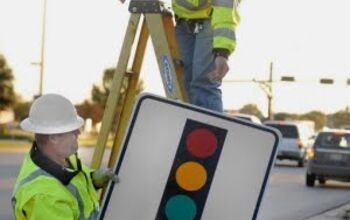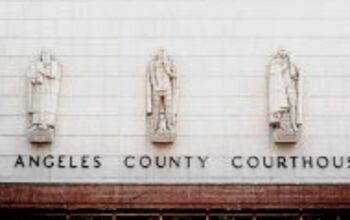California: Second Shot at Red Light Camera Tweak
The California Senate Appropriations committee voted 9-0 on March 29 to advance legislation that would alter the way red light cameras operate in the state. State Senator Joe Simitian (D-Palo Alto) re-introduced legislation that had stalled last year tweaking some of the more controversial aspects of automated ticketing programs.
“There is not consistent agreement about what current law actually requires to operate an automated traffic enforcement system,” Simitian wrote in his bill summary. “Furthermore, the processes by which an alleged violator may learn about and contest a citation are sometimes unclear and, in certain cases, appear to be misleading.”
The bill requires actual red light camera citations to appear on standardized, state-approved forms. Currently, red light camera vendors issue notices that look like tickets to registered vehicle owners to trick them into disclosing the identity of the driver — California law requires that only the actual person behind the wheel receive the ticket. The legislation would require a clear and prominent statement on such vendor mailings that there is no penalty for failure to respond.
Simitian cited the experience of Vera Gil, a constituent, as the motivation for trying once again to modify existing statutes. Gil faced significant problems in trying to clear her name after a private firm mailed her a red light camera ticket for an offense she did not commit. Simitian added a number of brand new provisions to the current proposal designed to force municipalities to certify that their goal is not revenue raising.
“Prior to installing an automated traffic enforcement system after January 1, 2012, the governmental agency shall make and adopt a finding of fact establishing that the system is needed at a specific location for reasons related to safety,” Senate Bill 29 states. “A governmental agency that proposes to install or operate an automated traffic enforcement system shall not consider revenue generation, beyond recovering its actual costs of operating the system, as a factor when considering whether or not to install or operate a system within its local jurisdiction.”
Most localities will have no problem filing such a statement, but the legislation would also impose a requirement that signs be placed within 200 feet on an intersection approach that has an automated ticketing machine. Current law requires signs, but not specifically on the approaches that are photo enforced. To keep track of performance, Simitian’s bill would require cities to file a report on the number of right-hand turn tickets issued at each intersection. Private vendors and cities currently conceal this information. Right-hand turning tickets now account for an estimated 70 to 90 percent of citations issued, even though studies show such turns are not dangerous. Reports would also have to include accident figures from before and after camera installation.
A copy of Senate Bill 29 is available in a 160k PDF file at the source link below.
Senate Bill 29 (California State Legislature, 4/5/2011)
[Courtesy: Thenewspaper.com]
More by The Newspaper
Latest Car Reviews
Read moreLatest Product Reviews
Read moreRecent Comments
- Lorenzo People don't want EVs, they want inexpensive vehicles. EVs are not that. To paraphrase the philosopher Yogi Berra: If people don't wanna buy 'em, how you gonna stop 'em?
- Ras815 Ok, you weren't kidding. That rear pillar window trick is freakin' awesome. Even in 2024.
- Probert Captions, pleeeeeeze.
- ToolGuy Companies that don't have plans in place for significant EV capacity by this timeframe (2028) are going to be left behind.
- Tassos Isn't this just a Golf Wagon with better styling and interior?I still cannot get used to the fact how worthless the $ has become compared to even 8 years ago, when I was able to buy far superior and more powerful cars than this little POS for.... 1/3rd less, both from a dealer, as good as new, and with free warranties. Oh, and they were not 15 year olds like this geezer, but 8 and 9 year olds instead.


































Comments
Join the conversation
The only legislation needed is to require cities to follow the traffic signal timing in the FHWA MUTCD and enforce it by making it a criminal offense to not do so. Nearly all cities already have the requirement but escape all penalty for timing the signals well below the requirement. Do the math yourself: it is all but impossible to have a light change duration (aka "yellow change interval") less than about five seconds. The cities are also way over citing meaningless tiny infractions of legal turns on red. Cities do it with impunity and the state is allowing them to get away with it. The Honorable senator would do well by having the state put an end to it.
This provision: shall not consider revenue generation, beyond recovering its actual costs of operating the system looks like an invitation to game the "costs" through the roof to justify more tickets. How about a requirement that any camera installation require voter approval? At what point do these people get that they work for US?